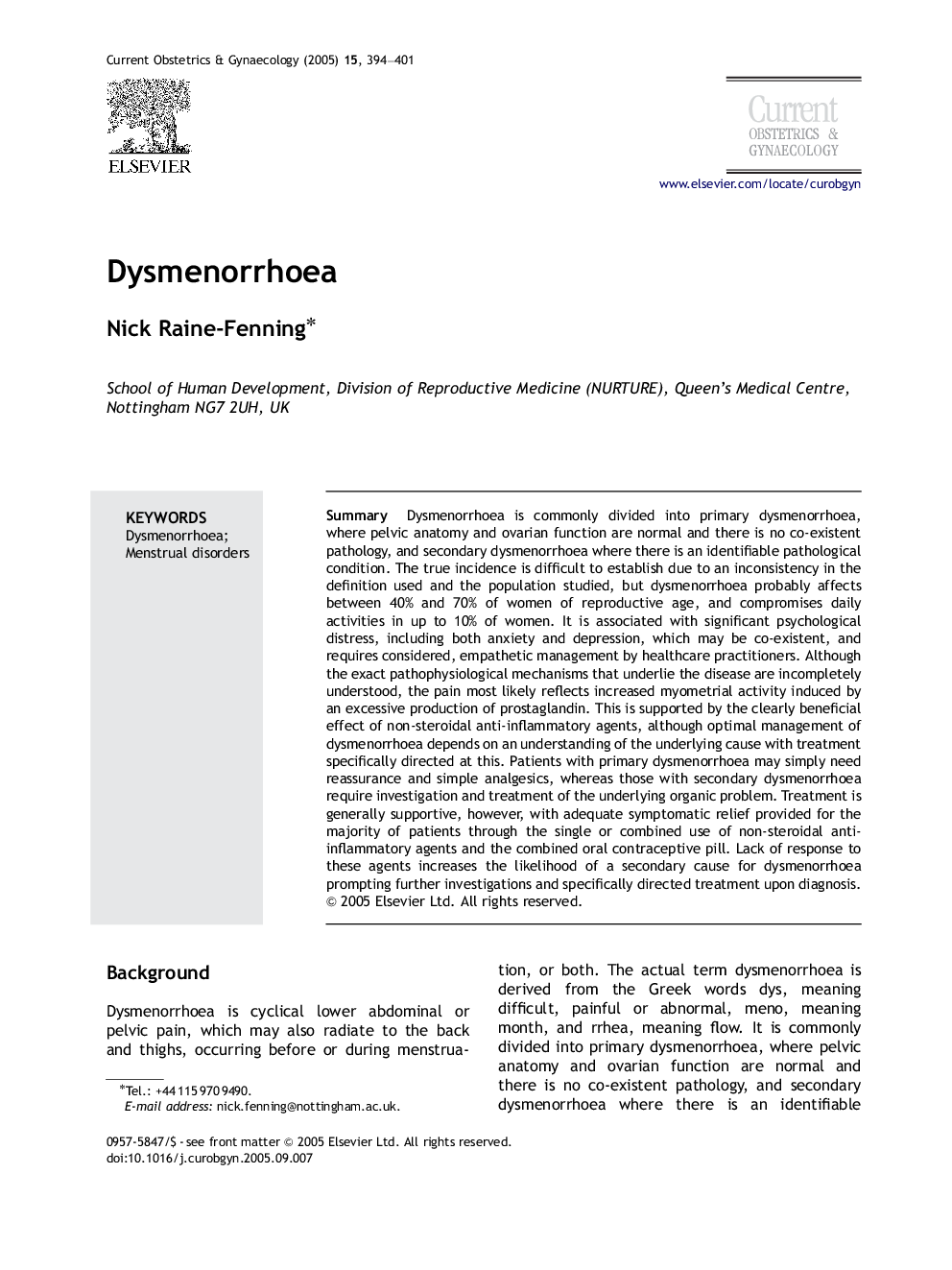| Article ID | Journal | Published Year | Pages | File Type |
|---|---|---|---|---|
| 9318184 | Current Obstetrics & Gynaecology | 2005 | 8 Pages |
Abstract
Dysmenorrhoea is commonly divided into primary dysmenorrhoea, where pelvic anatomy and ovarian function are normal and there is no co-existent pathology, and secondary dysmenorrhoea where there is an identifiable pathological condition. The true incidence is difficult to establish due to an inconsistency in the definition used and the population studied, but dysmenorrhoea probably affects between 40% and 70% of women of reproductive age, and compromises daily activities in up to 10% of women. It is associated with significant psychological distress, including both anxiety and depression, which may be co-existent, and requires considered, empathetic management by healthcare practitioners. Although the exact pathophysiological mechanisms that underlie the disease are incompletely understood, the pain most likely reflects increased myometrial activity induced by an excessive production of prostaglandin. This is supported by the clearly beneficial effect of non-steroidal anti-inflammatory agents, although optimal management of dysmenorrhoea depends on an understanding of the underlying cause with treatment specifically directed at this. Patients with primary dysmenorrhoea may simply need reassurance and simple analgesics, whereas those with secondary dysmenorrhoea require investigation and treatment of the underlying organic problem. Treatment is generally supportive, however, with adequate symptomatic relief provided for the majority of patients through the single or combined use of non-steroidal anti-inflammatory agents and the combined oral contraceptive pill. Lack of response to these agents increases the likelihood of a secondary cause for dysmenorrhoea prompting further investigations and specifically directed treatment upon diagnosis.
Keywords
Related Topics
Health Sciences
Medicine and Dentistry
Obstetrics, Gynecology and Women's Health
Authors
Nick Raine-Fenning,
